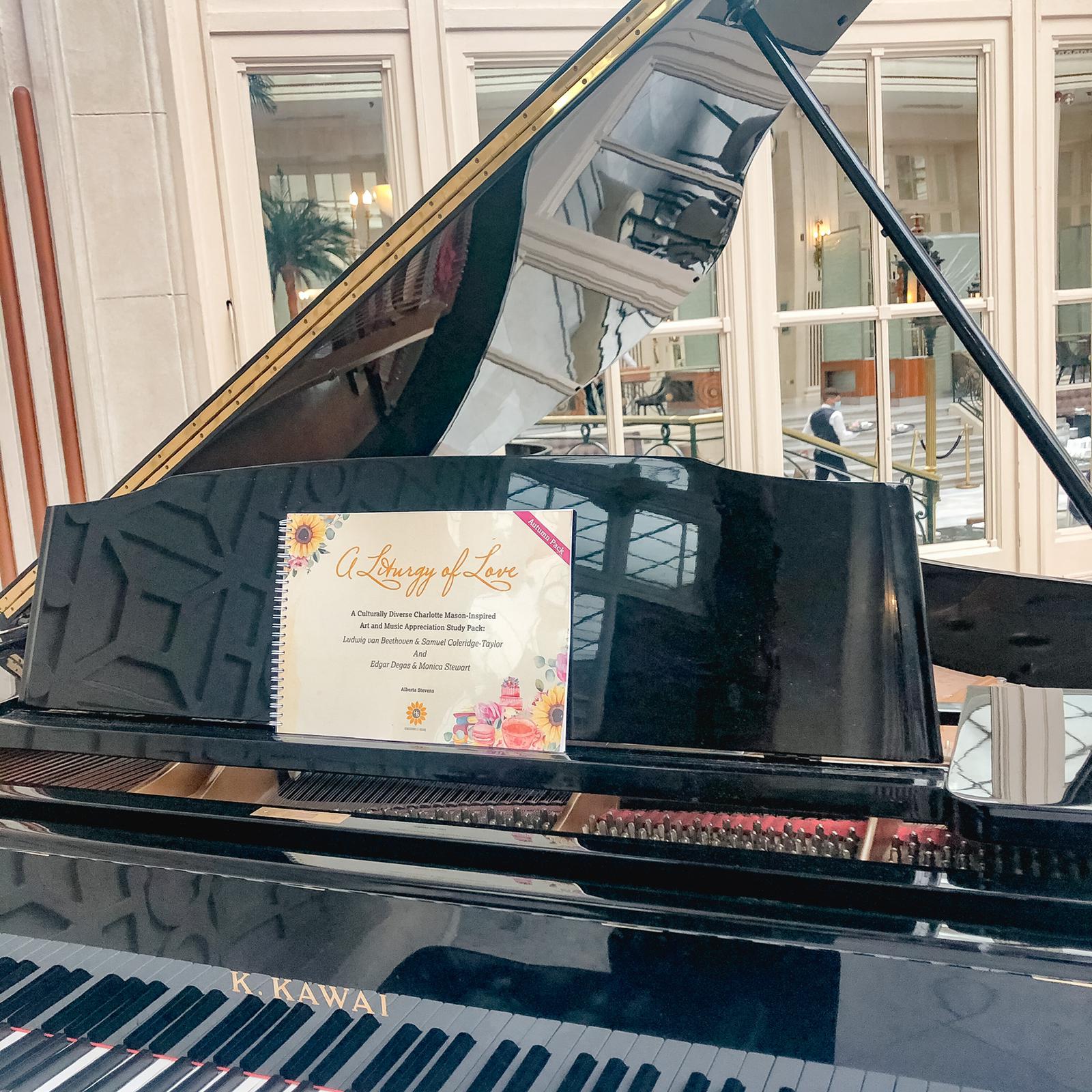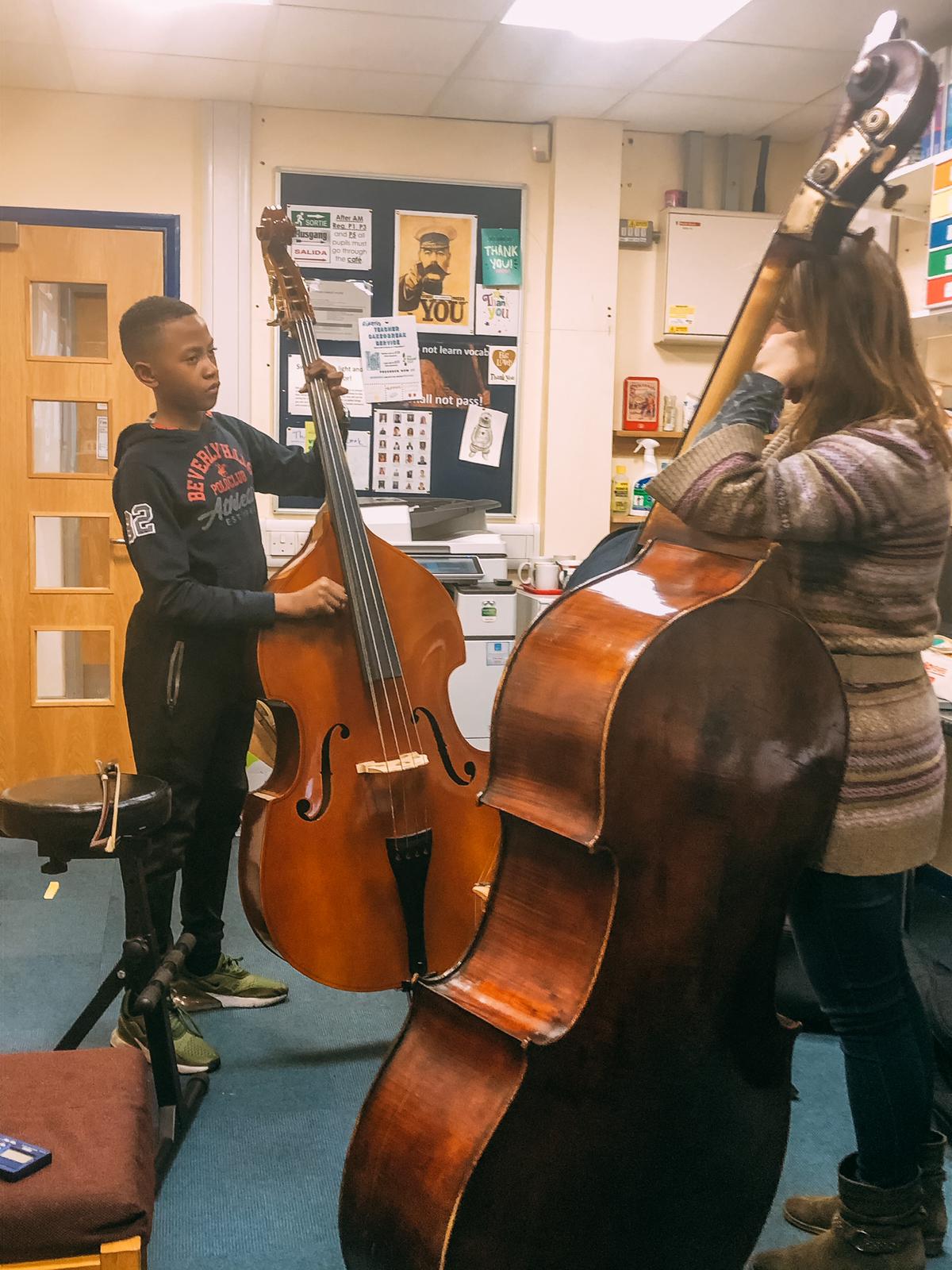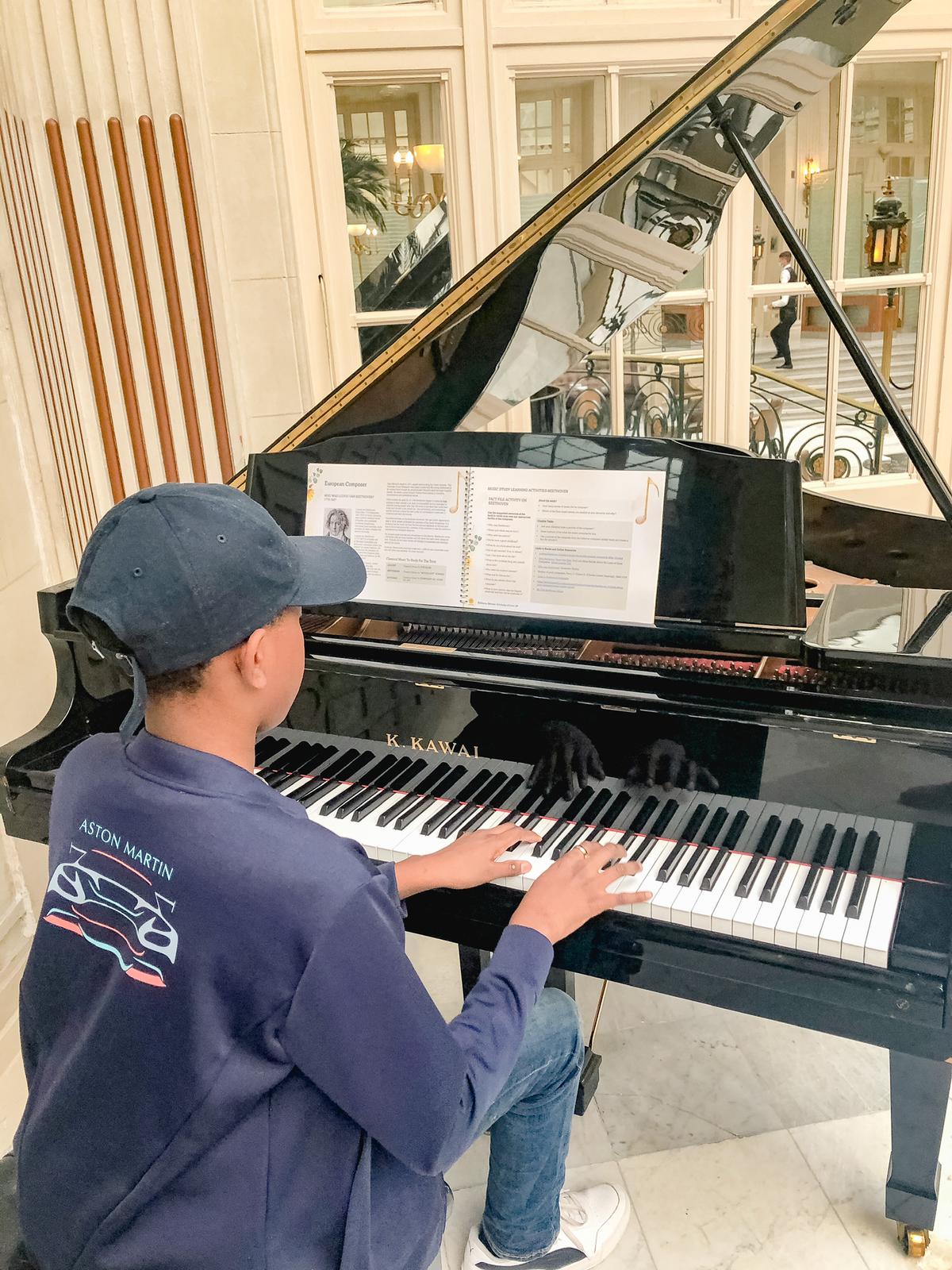RITUALS AND PRACTICES TO CULTIVATE THE LOVE OF MUSIC AT HOME
- Cultivating Music as a family cultural legacy
Growing up, my taste in music was greatly influenced by my parent’s preferences. Motown classics, 70s and 80s disco funk, African hi-life, Zairean/Congolese soukous, Sierra Leonean folk music from Dr Oloh to Afro National and not to forget my mother’s love for American country music, made the backdrop of my childhood. In my teens, my parents’ eclectic collection was interspersed with my own preference for 80s and 90s pop and R’n’B music. Artists like Madonna, Michael and Janet Jackson, Salt and Peppa, Whitney Houston, George Michael, LL Cool J, Boys II Men, TLC, Aaliyah, Missy Elliot and the like, guided my emotional and social life.
My musical repertoire was also greatly influenced by folk songs I learnt at my grandmother’s feet as well as songs from school. It still amazes me how those girly evening circle game songs and glorious hymns I learnt at my Christian boarding school still furnish my mental music library till today.
As I drew deeper into my Christian faith as a young adult, I began to choose songs that aligned with the woman I was becoming. Lyrics began to matter more. So in my 20s, I fell in love with jazz, soul-jazz fusion, neo-soul, gospel and soft Christian worship: these genres continue to form the soundtrack of my adulthood.
- Sharing family history through music
Like my parents, I have enjoyed passing on this long legacy of the love of music to my son. I do this by leisurely sharing anecdotes, childhood memories associated with songs as they come up. Through this, my son has learnt a lot about my childhood, his grandparent’s tastes and my African heritage. Most often, our conversations will redirect us to YouTube music videos which open the doors to learning about the fashion, social issues and language that accompanied the music of the day. In this way, music becomes a history timeline to our family’s history.
One way to get started with sharing family history with your kids is taking time to leisurely listen to old mix tapes or YouTube playlist that capture a particular time period in yours or your parent’s childhood. You could even include age-appropriate films that capture particular time periods as part of your repertoire. For me, Breakin’ a film about the breakdance subculture of the 80s is one of such films.
- Storytelling and folksongs
Being big fans of morning time in our family, we use the short lesson style to feature a wide range of folk songs and oral African fables which are often accompanied by folk songs I learnt from my grandmother. I also deliberately go in search of multicultural folk songs and fables as a way of introducing my son to other cultures. See my resource A Liturgy of Love for easily downloadable multicultural folk songs for kids


- Rituals for Music as a tool for connection
One area where Orsino’s lines about music being the food of love may have been taken too far is in pop music. Here, we are often made to feel that music is solely about the celebration of romantic love and increasingly, erotic or materialistic love. Being intentional about the music we listen to has allowed me to stage a range of music that celebrates the love of God, the love of different family relationships as well as stage music that inspires, nurtures and calms our souls
- Monthly family playlists
We create monthly playlists that feature a wide range of music that inspires, motivates and calms us. This means including a selection of each of our favourite genres as well as songs or musical pieces we intend to study at the time. For a taste of what our family playlist is like, here is a complimentary access to our August A Liturgy of Love Playlist on Spotify.
- Baby love songs
Another family musical practice that holds a key spot in my heart, is creating a unique love song for every new baby in my family. The song is often an adaptation of an existing folk or love long with new lyrics. We then use this song especially when they are younger to affirm, soothe and comfort that child. Even though my son is now 11, he still welcomes me singing his love song on cloudy days complete with mama’s hugs. Even my older nieces and nephews still encourage singing of their love songs when they visit.
To create a unique song for your child, take a folksy- catchy love song like the Beatle’s Hey Jude, or Eric Clapton’s Beautiful Boy, or Stevie Wonder’s soulful Ma Cherie Amour …you get the picture…and change the lyrics to achieve 3 things. 1. Highlight something unique about the child or what they bring to your family 2. Prophesy something powerful over their lives 3. affirm them of how loved and valuable they are.
Singing together
For someone who has never taken a singing lesson or considered myself to be singer of any sort, I surely do love to sing. Luckily so does my son, who fortunately, can sing. So we sing together, a lot. We sing hymns, folk songs and empowerment pop songs together during Morning Time. We sing together when we take walks along the lonely spaces. We sing when we cook or do house chores together. On a good day, when adulting hasn’t overcome me, I join my son to combine our singing with a good dance fest. In 2019, we both took part in our church’s Christmas carol choir.


- Rituals for cultivating music as an atmospheric tool or learning aid
When I became a mother, my musical pendulum swung again to include wide variety of genres I would not have hurriedly included in my playlists. Having read about the effect of classical music on the brain, I quickly entered the world of classical music, followed by lullabies, nursery rhymes, Disney movie songs and bucket loads of Michael Jackson than I cared for at that point in my life. I’m sure you can relate to having that awkward moment when you give a friend a ride in your car, and your children’s playlist comes on and you realise you no longer have exclusive rights to your music library.
- Music as an atmosphere
When we began home-educating, a new era of music education dawned. Music became one of our biggest atmospheric tools. We had a genre of music for every phase of the day, from morning time to dinner. After a while, I began creating monthly playlists that became a silent facilitator of our daily rhythms. We would start with acoustic worship songs which would lead us into morning time. This was followed by 1.5 hours of classical music to accompany our desk learning, followed by 30mins of inspirational gospel or empowerment song to pump us up in our breaktime. After our post lunch study time, we would usher in some jazz and Motown before hyping it up with some Christian rap and afro beats for our creative learning time. These playlists later formed the basis of the complimentary playlists I offer to my A Liturgy of Love clients, a sample of which can be found here.
- Music as a learning aid
Music features as a handy tool for memorising poems, maths formulas and important historical dates. In this area, I allow my son, being the more musical out of us, to take the lead in crafting the rhythms and tunes for facts that he needs to commit to memory. We often have so much fun doing these exercises.
- Composer study
As Charlotte Mason suggests, we study the life and works of a composer or musician drawing from a diverse range of musical backgrounds. We do this by actively listening to one piece of the composers work at a time at various times in the day. This could be during morning time, on-the-go in the car, during dinner time etc. Furthermore, we also immerse ourselves in learning about the composer’s life by reading living books or articles as well as watching documentaries and lectures where available. To close our studies, I often ask my son to create a short fact-file or written narration along with a portrait of the composer.
For an example of our music study curriculum that follows the rhythm I’ve described above, check out my morning time resource A Liturgy of Love
- Rituals for creating music as a means of nurturing and expressing our inner lives
In addition to using a careful selection of songs to inspire and motivate us, I have actively encouraged my son to sing and play musical instruments. In the last 6 years, Saturday mornings and at least one hour in the week has been dedicated to my son learning to play 3 instruments. Having chosen to drop one, for which my purse was grateful, our Saturday mornings are still spent musically with wonderful tutors at EJMS where he also does choir practice, music theory and aural lessons.
- Daily music instrument practice
Music practice is part of our daily routine. If I am to be honest, it is my least favourite part of our music ritual and practices. I often have to use a lot of carrot and stick, which can be tedious. However, friends who play music professionally tell me reluctance to practice is a normal part of the process. As such, those moments when my son gravitates to one of his instruments of his own accord to create his own pieces or practice, have been truly magical to behold.
- Music production
Thanks to a free Apple Garageband summer kids camp session 2 years ago, my son discovered a new love of music creation. Seeing his natural interest in this area, I fanned the flame by booking him a 6-week one-on-one music production session last summer, the results of which continues to bring him so much joy one year later. Since then, many afternoons that could have been spent mindlessly on screens have been spent creating original music beats of various kinds. These include setting beats to poems, film scenes and even creating the theme tune for our podcast.
Garageband is a free music production app that comes with Apple products. There are many free tutorials on YouTube that could get your child freestyling with creating their own beats in no time.
- Live concerts/gigs
Nothing brings home the practice of music appreciation like a live music concert or gig. Prior to the COVID lockdown era, I made an effort to expose my son as often as possible to various live music opportunities. From being immersed in an atmosphere of collective worship through a live church band every Sunday to going to classical music proms, summer jazz festivals and gospel musical concerts as well as attending and participating in his music school concerts. One of the best parts of going to the theatre is being able to listen to an orchestra first-hand.
In normal circumstances, national music festival venues in the UK, like the Royal Albert Hall are good at offering Home-Ed families in the UK opportunities to attend their school musical events like the Primary proms. You would often have to fill in a form or send an email to edbookings@royalalberthall.com.
I’d love to hear how you fan the flames of the music in your home.
Please comment below.
